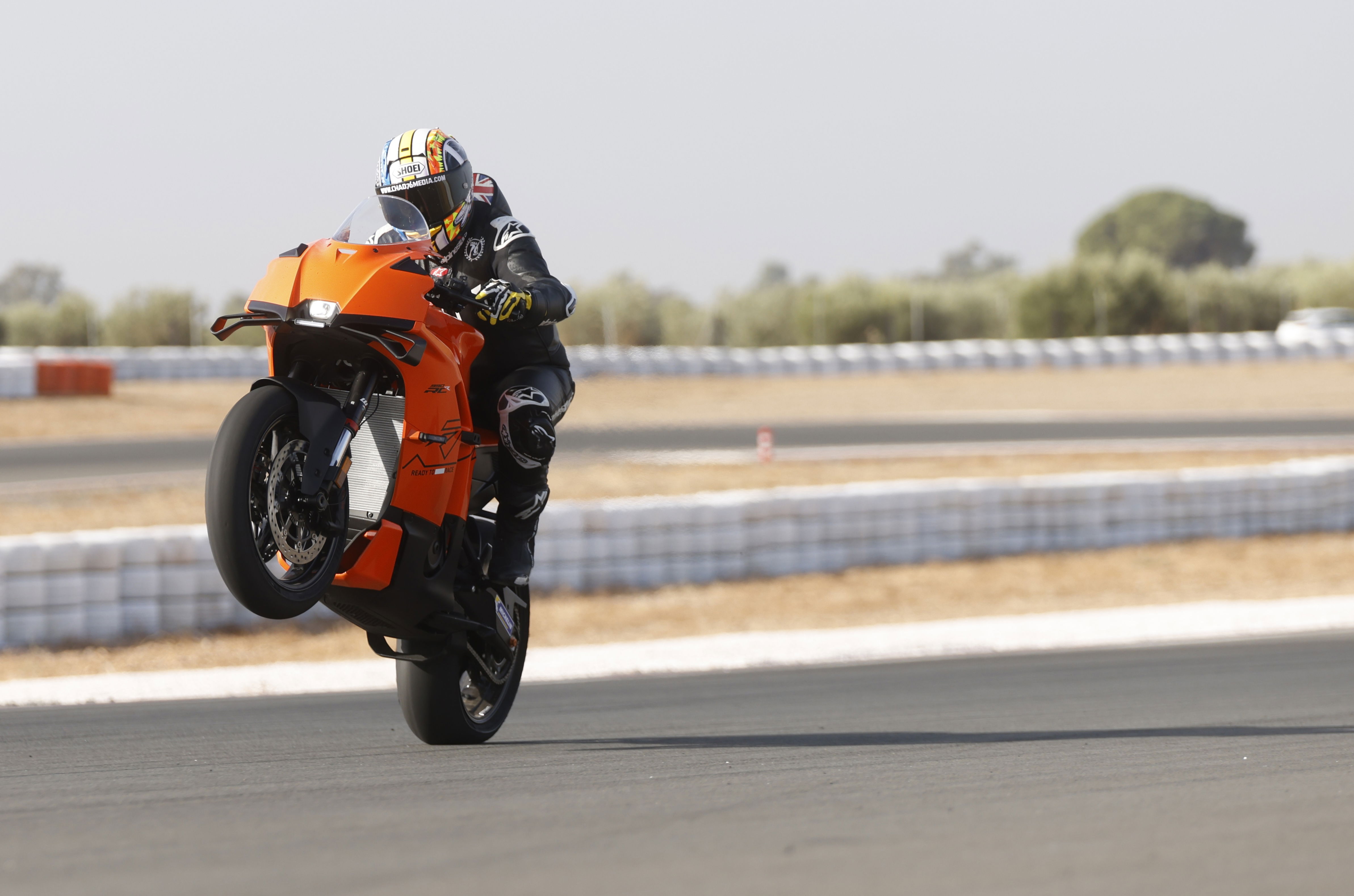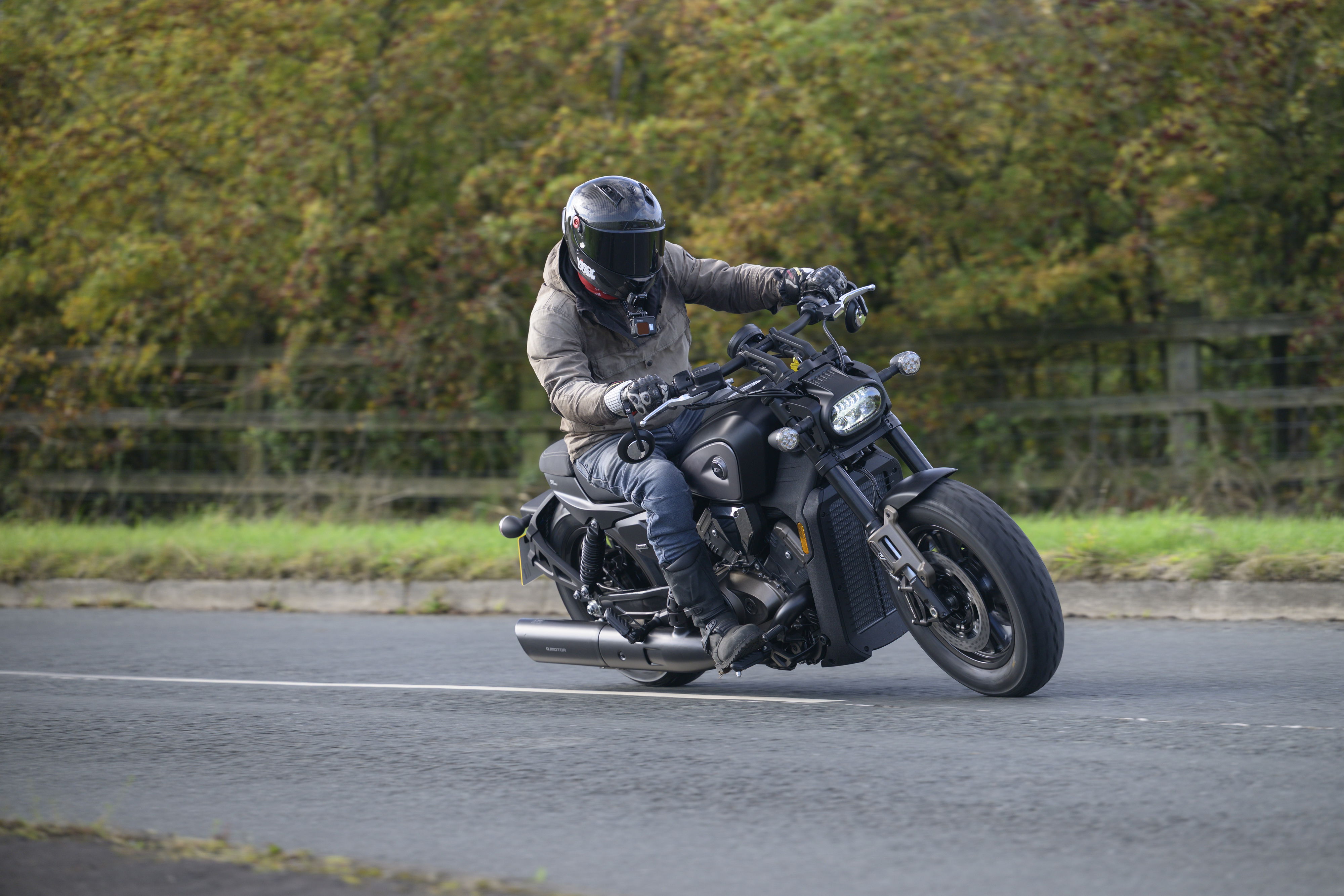VN2000 (2004 - 2008) review
From its massive 49mm forks to its 200mm rear tire, the Vulcan 2000 represents a flagship for Kawasaki and it’s a lot of motorcycle in every sense

When You First ride the Vulcan, you’re understandably concerned about having 141lb.ft of torque controlled by your right wrist. There’s always the nagging doubt that the Vulcan 2000 might spin its rear wheel uncontrollably and spit you off.
Displacing 2053cc (125.3 cubic inches), the 2004 Vulcan 2000 has the largest capacity V-twin engine ever put into production by a major manufacturer. With 141lb.ft of torque at 3000 rpm and 116 horsepower at 5000 rpm, the Vulcan 2000 out powers many small cars. It’s also carefully designed to be smooth and usable in the delivery of that power.
Pulling away from a stop for the first time, the Vulcan 2000 is surprisingly controlled. Tame, even. That is, until you have some room to let the bike stretch its legs a bit. Strong off the bottom, the Vulcan 2000 just keeps building forward momentum until your eyes get a bit wider and your mouth starts to form those words that you tend to say when you are overwhelmed about something.
Then, try accelerating in the higher gears – maybe fourth and fifth – and it’s pretty obvious the Vulcan 2000 doesn't seem to care what gear you are in. The rate of acceleration seems identical to the one found in first and second gears. I never had this sensation on any other bike. It must have something to do with all that torque.
The Vulcan 2000 package is a good one – and that includes the ergonomics, chassis and handling. That ultra low seat is firm but comfortable. It is thoughtfully shaped and proved a nice perch on a 150 mile day. The bars and floorboards stretch you out a bit, as they must on a bike this long and low, but seem to work well enough once you are used to being in the saddle of the Vulcan 2000.
Lifting the Vulcan 2000 off its low side stand (too low for comfort, really) requires a fair amount of muscle. Like a GoldWing with a
broken reverse gear, you learn not to park the Vulcan 2000 face-in to a parking space with a downward slope. Manoeuvring the bike at low speeds requires some deft use of both clutch and rear brake.
To get around the sheer bulk of the bike, Kawasaki reduced the engine height and lowered the centre of gravity using pushrods to actuate the four valves per cylinder. With 123.2mm of stroke, overhead cams would have made a big engine unacceptably bigger.
A single-pin crankshaft helps the Vulcan 2000 voice that classic V-twin sound, while dual counterbalancers and rubber engine mounts keep those huge explosions in each cylinder head from unduly disturbing the rider's comfort.
A five-speed transmission transfers power to the rear wheel through a traditional looking belt drive system and on/off throttle transitions are remarkably smooth, considering the massive power pulses of this larger than life engine.
The fuel injection system is controlled by a sophisticated ECU and utilises 46mm throttle bodies and sub-throttle valves. This system mimics a CV carburettor, smoothing power production and largely eliminating the abruptness of older-style fuel injection systems. With a form of cush drive on the output shaft spinning the belt and the belt itself smoothing throttle transitions, those giant power pulses arrive at the rear wheel in a predictable, controllable and smooth fashion.
This all helps the Vulcan 2000 to handle remarkably well. By experimenting with fork offset, rake and trail, Kawasaki came up with a very stable motorcycle that still steers with little effort on the wide bars.
Although my initial impression was that the Vulcan 2000 would run wide on corner exits, I eventually felt in tune with the bike's handling and found cornering a joy. Scraping the floorboards on both sides (the bike has about the same ground clearance as you will find on most cruisers) soon became a common occurrence, with no dramas.
When You First ride the Vulcan, you’re understandably concerned about having 141lb.ft of torque controlled by your right wrist. There’s always the nagging doubt that the Vulcan 2000 might spin its rear wheel uncontrollably and spit you off.
Displacing 2053cc (125.3 cubic inches), the 2004 Vulcan 2000 has the largest capacity V-twin engine ever put into production by a major manufacturer. With 141lb.ft of torque at 3000 rpm and 116 horsepower at 5000 rpm, the Vulcan 2000 out powers many small cars. It’s also carefully designed to be smooth and usable in the delivery of that power.
Pulling away from a stop for the first time, the Vulcan 2000 is surprisingly controlled. Tame, even. That is, until you have some room to let the bike stretch its legs a bit. Strong off the bottom, the Vulcan 2000 just keeps building forward momentum until your eyes get a bit wider and your mouth starts to form those words that you tend to say when you are overwhelmed about something.
Then, try accelerating in the higher gears – maybe fourth and fifth – and it’s pretty obvious the Vulcan 2000 doesn't seem to care what gear you are in. The rate of acceleration seems identical to the one found in first and second gears. I never had this sensation on any other bike. It must have something to do with all that torque.
The Vulcan 2000 package is a good one – and that includes the ergonomics, chassis and handling. That ultra low seat is firm but comfortable. It is thoughtfully shaped and proved a nice perch on a 150 mile day. The bars and floorboards stretch you out a bit, as they must on a bike this long and low, but seem to work well enough once you are used to being in the saddle of the Vulcan 2000.
Lifting the Vulcan 2000 off its low side stand (too low for comfort, really) requires a fair amount of muscle. Like a GoldWing with a
broken reverse gear, you learn not to park the Vulcan 2000 face-in to a parking space with a downward slope. Manoeuvring the bike at low speeds requires some deft use of both clutch and rear brake.
To get around the sheer bulk of the bike, Kawasaki reduced the engine height and lowered the centre of gravity using pushrods to actuate the four valves per cylinder. With 123.2mm of stroke, overhead cams would have made a big engine unacceptably bigger.
A single-pin crankshaft helps the Vulcan 2000 voice that classic V-twin sound, while dual counterbalancers and rubber engine mounts keep those huge explosions in each cylinder head from unduly disturbing the rider's comfort.
A five-speed transmission transfers power to the rear wheel through a traditional looking belt drive system and on/off throttle transitions are remarkably smooth, considering the massive power pulses of this larger than life engine.
The fuel injection system is controlled by a sophisticated ECU and utilises 46mm throttle bodies and sub-throttle valves. This system mimics a CV carburettor, smoothing power production and largely eliminating the abruptness of older-style fuel injection systems. With a form of cush drive on the output shaft spinning the belt and the belt itself smoothing throttle transitions, those giant power pulses arrive at the rear wheel in a predictable, controllable and smooth fashion.
This all helps the Vulcan 2000 to handle remarkably well. By experimenting with fork offset, rake and trail, Kawasaki came up with a very stable motorcycle that still steers with little effort on the wide bars.
Although my initial impression was that the Vulcan 2000 would run wide on corner exits, I eventually felt in tune with the bike's handling and found cornering a joy. Scraping the floorboards on both sides (the bike has about the same ground clearance as you will find on most cruisers) soon became a common occurrence, with no dramas.
| Seats | 0 |
| Seat Height (mm) | 690 |
| Suspension Front | 49mm telescopic fork |
| Suspension Rear | Swingarm with mono-shock (non-link type) |
| Adjustability Rear | Rebound damping and spring preload |
| Tyres Front | 150/80R16M/C |
| Tyres Rear | 200/60R16M/C |
| Brakes Front | Dual 300mm discs with dual 4-piston |
| Brakes Rear | Single 320mm disc with twin-piston |
| Tank Capacity (litres) | 21 |
| Chassis | Double-cradle, high-tensile steel |
| Cubic Capacity (cc) | 2053 |
| Bore (mm) | 103 |
| Stroke (mm) | 123.2 |
| Compression Ratio | 9.5 |
| Ignition | Digital |
| Valves Per Cylinder | 4 |
| Cooling | Liquid cooled |
| Fuel Delivery | Injection |
| Stroke Type | Four Stroke |
| Drive | Belt |
| Top Speed |











